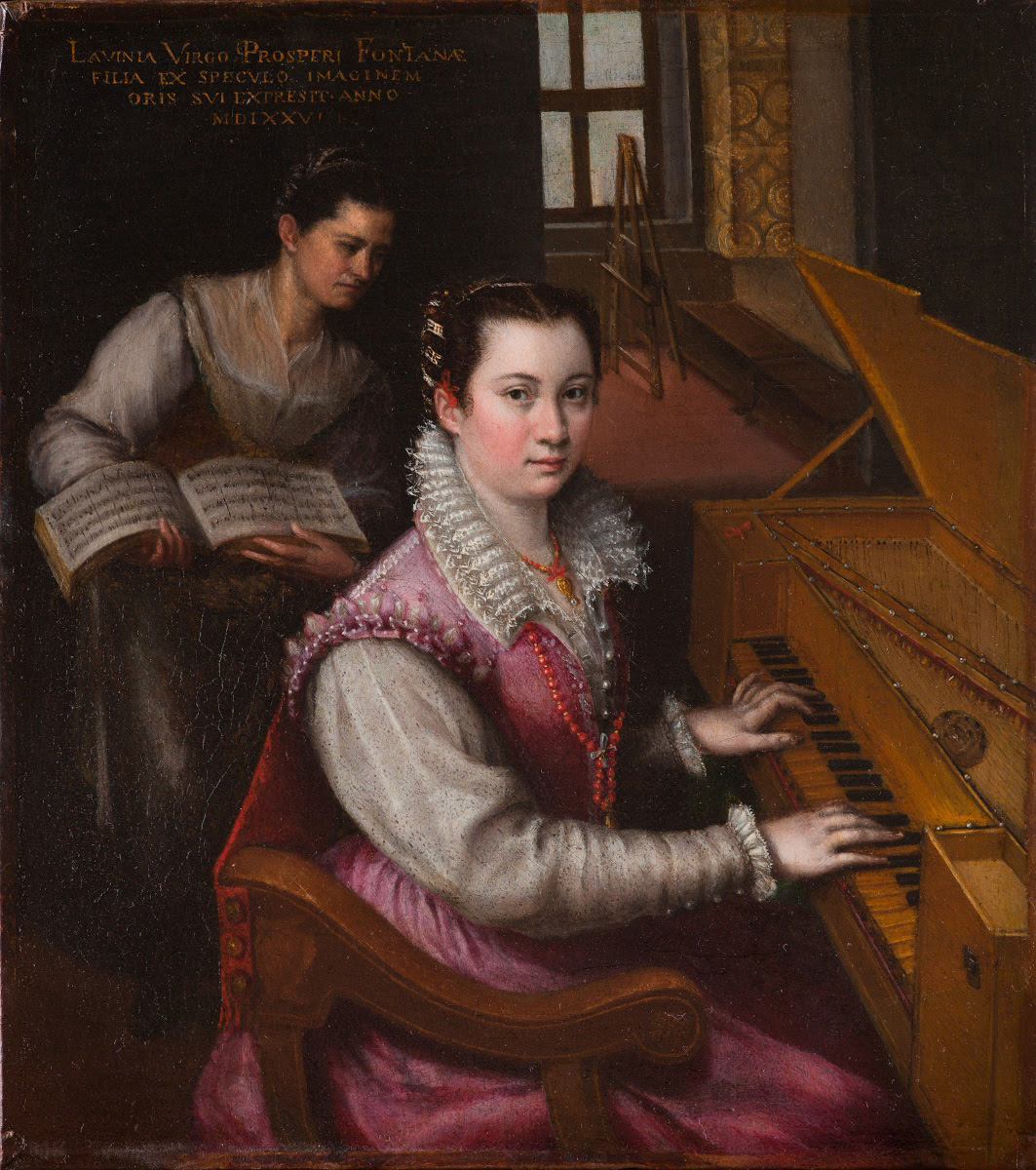In celebration of Women’s History Month, art historian and author Katy Hessel digs into the lives and practices of five women artists in our collection. Learn why she considers them some of the greats.
Sitting proudly in the foreground, the 16th-century musician and noblewoman Lucia Bonasoni Garzoni is dressed in her finest jewelry and an exquisitely embellished gown.
It is accessorized with a highly intricate lace ruff and a set of thick chains. With her finger poised between two pages in a book, it’s as if we have interrupted her mid-read.
The scene, fit for a queen, is loaded with symbolism. Behind the subject we can see a table, with an upturned lute and pages of sheet music strewn beneath. On a closer inspection, we can read that the music is a score for a lute and soprano voice, perhaps an indication of Garzoni’s fine talents as an accomplished musician.
There’s also the tiny silver brooch in the shape of a lapdog, which suggests marital fidelity, attached to her dress with a red ribbon, a small gold ring topped with a red jewel, an expensively made dress, and a book in her left hand. Not only do these objects, garments, and items convey a message that this woman is from wealth but they also illustrate her intellect.
Most of all, the choice of Lavinia Fontana as Garzoni's portrait painter reveals an interest women artists depicting noblewomen. Garzoni was the godmother of Fontana’s 11th and final child, and this portrait could also suggest a friendship between the two.

Lavinia Fontana, Lucia Bonasoni Garzoni, c. 1590, oil on canvas, Gift of Funds from Anonymous in memory of Montana Walker Strauss, and Patrons' Permanent Fund, 2022.38.1
Lavinia Fontana Broke Barriers
Lavinia Fontana was one of the most successful Italian women artists working in the late 16th and early 17th centuries. She was based in Bologna—a city that purposefully supported women’s professional pursuits and home to Europe’s oldest university that had accepted women since the 13th century.
Fontana tackled not only portraiture but grand religious and secular subject matter, too. She may have been the first woman artist in Western art history who painted a fully nude figure, as seen in Mars and Venus. This might suggest that she had access to nude models, although it was not until the late 19th century that women were allowed into classes where they could draw nude models.
Fontana is also thought to have been the first professional woman painter to run her own studio. Like many women artists of her generation, she was lucky enough to get artistic training from her father, Prospero Fontana, an artist who specialized in the mannerist style.
She went on to marry Gian Paolo Zappi, an artist and minor nobleman. He not only allowed her to keep her maiden name but also encouraged her work. He helped her gain clients and painted background detail (a job often left to assistants).
Clearly, she was formidably ambitious. She completed a staggering 24 public commissions during her lifetime, some as large as altarpieces. Around 1590, when Fontana was already enjoying a successful career in Bologna, she received her first commission from the pope. Soon after, she moved to Rome where she became among the first women accepted to the prestigious Accademia di San Luca.

Lavinia Fontana, Self-portrait at the Spinet, 1577, oil on canvas, National Academy of San Luca, Rome, Italy © Accademia Nazionale di San Luca, Roma. Foto Mauro Coen.
Fontana’s Glorious Self-Portrait
Fontana’s Self-Portrait at the Spinet demonstrates her pride in her own talents as a painter and a musician. Painting and music were key components of the humanist education taught to the noblewomen of Bologna in the late 16th century, and Fontana was no exception. She stares back at us in this self-portrait while her hands dance along the musical instrument’s keys. In the background, her maidservant holds her sheet music and the light coming through the window illuminates her easel.
On closer inspection, the reason for this portrait becomes evident. Leaning on the instrument is a love knot, a symbol of betrothal. The Latin inscription in the top left corner reads: “Lavinia, the unmarried daughter of Prospero Fontana, took this, her image, from the mirror, 1577.” The portrait was intended as a gift for her future father-in-law to show him her wide array of talents, chiefly the sensuous painting itself.
Women of Many Talents
Although there is no documentation of Fontana’s musical achievements, portraying herself as both musician and artist shows the range of her education and talents.
Garzoni, on the other hand, received acclaim for her musical ability from her contemporaries. One review read: “And the host of the Graces, and the whole array of Virtues, testify to this in singing her glories and honors.”
What I find extraordinary about Portrait of Lucia Bonasoni Garzoni is that it illustrates the skills of two accomplished women in these two spheres at a moment when women were still an exception in both.
Art in your inbox
Our weekly email features news, events, exhibitions, and more.
